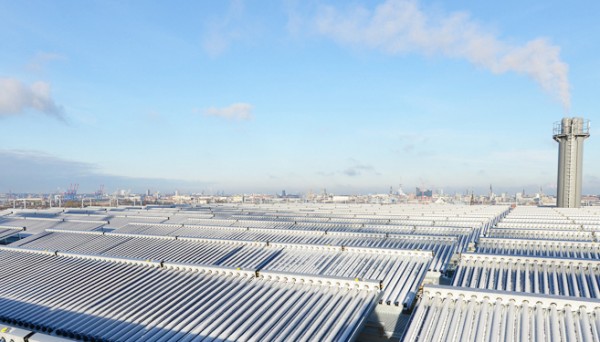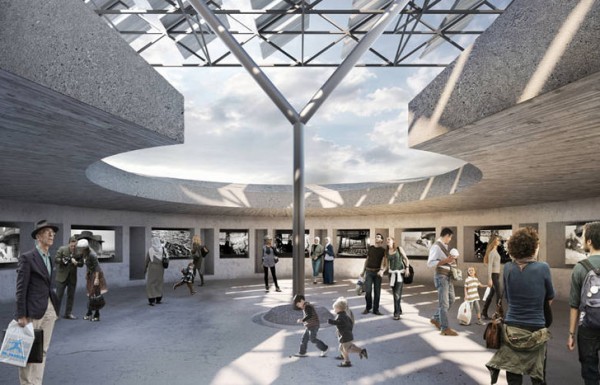For 70 years, the gray hulk of the Wilhelmsburg flak bunker has stood in Hamburg, Germany, as an unofficial memorial to the terrible days of World War II. In 1947, the occupying British Army tried to demolish it, but could barely manage to dent the massive 10-foot-thick concrete walls and 13-foot-thick roof that had already withstood two years of Allied bombardment.
After the 130-foot-tall, fortress-like structure sat idle on Neuhöfer Strasse for more than six decades, the city of Hamburg decided to make positive use of the sturdy structure by converting into a renewable energy plant, using photovoltaic and thermal solar energy, biogas, wood chips and waste heat from an adjacent manufacturing plant.

Upon completion by around 2015, the new Energiebunker is expected to generate 22,500 megawatt-hours of heat and nearly 3,000 megawatt hours of electricity, or enough to provide heat and hot water for 3,000 households each year and meet the electricity needs of 1,000 households. The adaptive reuse project, part of an overall “Renewable Wilhelmsburg” initiative to address climate change, will also reduce CO2 emissions by 95 percent, compared to a conventional coal-burning power station.

The outer skin and south-facing wall of the bunker is now covered with more than 37,600 square feet of thermal solar panels that will be used to heat up water to be stored in a 528,000-gallon buffer. The buffer function, according to IBA Hamburg, allows the plant to reduce the amount of supplementary power generation from the biomethane-fired combined heat and power plant, the wood-chip-burning plant and heat from the factory next door. Savings, they say, will amount to 4.5 megawatts less capacity to supply enough heat for its customers.

The 70,600-cubic-foot outer shell, which was large enough to shelter 30,000 residents during WWII air raids, will also be used for tourist activity, including a café and open-air terrace up around the 100-foot level, providing sweeping views of the Port of Hamburg. In addition, the walls and roof will be restored and strengthened to serve as a monument to the bunker’s original purpose. At the top of the structure’s former flak towers, a historical interpretive center is being planned to document its historical significance.